The motorcycle offroad traveler, and AGEIST profile Colin Evans, is currently riding through Australia. Colin continues to keep an updated blog of his travels from Melbourne up into the Outback, to Adelaide and Victoria. The blog dots the history of the places he encounters and documents what has changed.
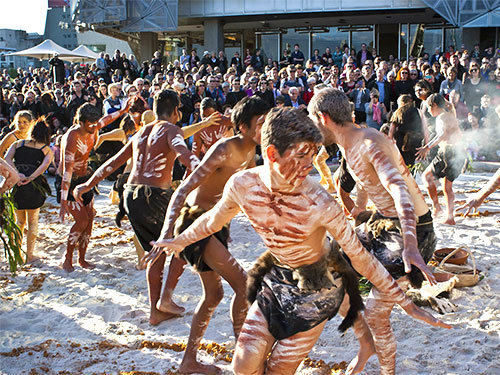
The Melbourne Festival – Tanderrum
My first day in Australia was the first day of the Melbourne Festival with both Portland and family connections for me. The former Artistic Director for the Melbourne Festival was Kristy Edmunds, who created the Portland Institute for Contemporary Arts and then moved from Portland to do the same thing – but bigger – here. At that time, Kristy’s patron was my cousin Penny who ran Arts Victoria for the Premier of the State; essentially the cheque book for the festival. Small world even over thousands of miles.
Melbourne connects to Portland via Sutton-in-Ashfield, Nottinghamshire.
The opening performance for the festival was Tanderrum, a ceremony that brings together the five aboriginal clans that have lived here for hundreds, if not thousands, of generations; a ceremony that had been hidden until recently since the British arrived two hundred years ago. The ceremony celebrates spring, and the agreement among these groups to hunt and fish, temporarily, on each other’s land. A lot like Tom McCall’s dictum about Oregon: you are welcome to visit but please don’t stay.
Two things struck me about this event. First, the participants were not all obviously aboriginal due to a long time of mingling and mixing with new arrivals. Apparently, in Victoria you are allowed to claim first people status even if you are only one 32nd aboriginal; a source of anger for the conservative end of the political spectrum.
Second, the festival was very visible about needing permission to photograph the event due to cultural sensitivities. In the US, I am sure this performance would have been surrounded by a Christmas tree of lit up iPhones snapping and posting to Instagram, but here – nothing. Not a single camera in evidence. Which is why I stole the attached photos from the official festival site. The event I saw was identical as you would expect.
However, as I left, I heard a lady complaining to her friend that she was “a bit disappointed because it was the same as last year.” Well I’m sure it’s been the same for the last 60,000 years; it’s not a bloody rock concert where you expect them to play the new album.
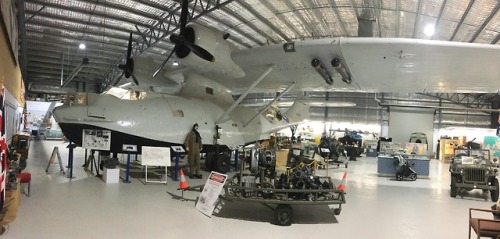
The Home of the Catalina – Lake Boga, Victoria
Riding through the Murray-Darling Valley area that straddles Victoria and New South Wales is a glimpse into the immensity of Australian agriculture – horizon to horizon vineyards and olives and oranges and almonds and, strangely, carrots.
But totally hidden from view with only one small sign off the Murray Valley Highway, is a museum on Lake Boga that celebrates the Catalina. As the Japanese expanded their aggression in World War II and destroyed a lot of Royal Australian Air Force assets, it was decided to move the squadrons of Catalina flying boats to a new “secret” base on Lake Boga – a few hundred kilometers from Melbourne and several thousand kilometers further away from the Japanese.
In 1985, the Lions Club came across a Catalina that was still intact. It was bought for 50 quid after the war by a local farmer and flown to a lake near his farm where he moored it in the shade and stripped the plane for its wiring and generator that he used to power and light his barn. Other people did the same thing and then melted the metal for scrap but, apparently and luckily, this chap lost interest and the plane sat on his pond for 40 years until the Lions bought it and built a museum around it. Today it sits resplendent as a monument to the courage of those that flew this slow and vulnerable beast and to the crews and maintenance personnel who called Lake Boga home until VJ Day.
There were apparently 8 maintenance engineers for every one women’s air force personnel who were supposed to be separated from their male counterparts in huts that were called “Blossoms of the Dust’ and “Seldom Inn”. There are a lot more stories that are shown at the museum I’m sure. But I digress.
Thanks to Daryl we got a humorous and moving education on this aspect of Australian history and the ordinary people who made an extraordinary difference.
Photos: The Catalinas were typically flown on night operations and painted black and called the “Black Cats” – View from the rear and the toilet that vented under the tail – Michael Ruppert and the 14 cylinder Pratt engine – aircrew – Daryl the Lions Club host – view of the stripped Catalina.
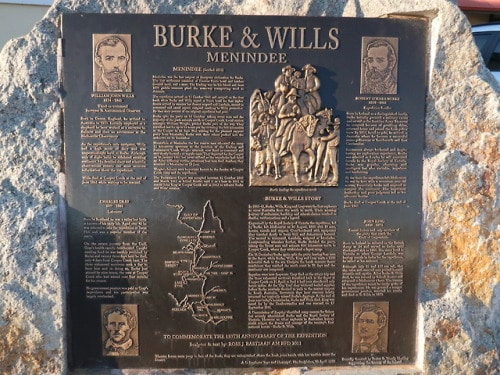
Burke and Wills – The Disastrous Expedition that People Still Talk About
In 1860, the leaders in Melbourne mounted an expedition to explore a route across Australia to create trade routes from Melbourne to Asia and, equally importantly, the new telegraph network to London. Four of the party did actually make it 2,000 miles to the Gulf of Carpenteria, but the Maidens Hotel in Menindee is the last place the leaders of the expedition were seen alive.
Melbourne was in the middle of a gold boom and called itself the biggest city in the British Empire (not sure any of them had been to Calcutta, but I digress). But Melbourne is still a LONG way from Great Britain. The need for connection was urgent, so they mounted an expedition and thousands came out to see 19 men take off with horses, camels, and two years of food. To lead the expedition the city chose Robert Burke, and Irish police officer with no experience of the Australian bush. A choice that doomed the effort from the start.
They took two months to get to Menindee (normally a one week trip for the mail coach), the team fell out and Burke decided to take Wills and two others to go it alone – fast and light – and told the others to wait for them at Cooper Creek. The small party made it back to the agreed rendezvous after three months, but one day after the crew gave up on them and left them to their fate.
Over beers at dinner at the Maidens Hotel, the locals here in Menindee, but also plenty of other places we stopped, still describe what went wrong and discuss new books and new findings about the expedition. This is still an Australian obsession.
Photos: The Maidens Hotel was built in 1842 and is still largely how Burke and Wills would remember it apart from the really cold beer – plaque to remember the disaster.
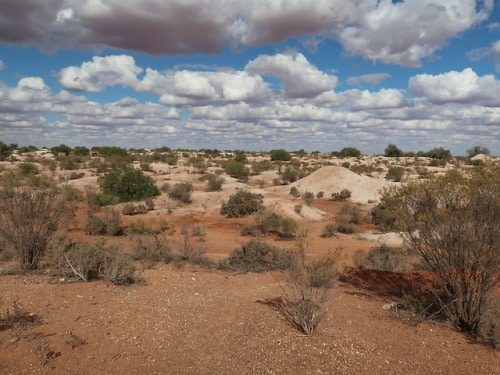
White Cliffs – Outback and Laid Back
White Cliffs was once an opal mining mecca in the southwest of New South Wales. Today there are a couple of commercial scale operations, but most of the mining appears to be in the “Heritage” area where miners have tiny claims and are limited to using “heritage” methods: basically a pickaxe and a wheelbarrow. That whole area is covered with death trap holes surrounded by “mullock.” We were told that most of these plots cost $87 a year and were worked as a hobby. Not easy to see the fun in this at all.
About 80 percent of the people of White Cliffs live in dug-outs: underground houses made from expanding opal mines or simply augured into the hills to make dwellings that are a respite from the heat. The first solar power plant in Australia was built here because some professor calculated it had the highest solar exposure. Our motel was built this way with caves as rooms about 20 feet underground.
There are about 100 citizens in town and, when we pulled up to the pub for a quick beer, we never left, stayed for dinner, and ended up meeting about half of them. Do you all come to the pub every day? “Oh crikey no mate that’d be silly. Only 5 of 7 days usually.” It must get lonely in the dug-outs.
Add to that, Central Darling Shire, within which this town lies, is the largest Shire in NSW and yet has the smallest population. It covers an area about the size of the main island of Tasmania, but has a population of less than 2,000 people. So White Cliffs is a big percentage of the Shire.
Most at the pub were older folks who had moved here for the “White Cliffs lifestyle.” I asked what that was and one lady told me it meant things get done according to their importance and everyone knew everyone and looked out for each other. Most showed up in a small old ute with a dog in the back. One lady showed up with her two kids and a rescued lamb being bottle fed and cavorting with the dogs. They all had stories to tell and plenty of time to tell them.
We met Ken Davis who pulled out his driving license for me to prove he was actually 80. There was absolutely no need to do that; Ken looked like he had lived every bit of every one of those years. He’d been a sheep shearer for 20 years and worked as a mechanic in various mines the rest of his working life. He’d been to America and enjoyed it but couldn’t “understand why your bloody revolving doors go the wrong way round,” and then said, “And what’s with all that tipping everyone? Why can’t you just pay everyone a living bloody wage and not make them beg for tips all the time?”
No argument from me Ken.
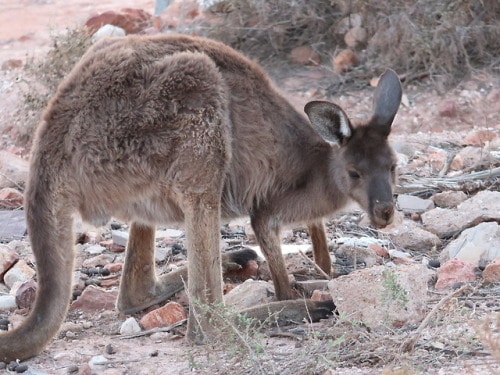
Kangaroo Carnage
After you get over the initial delight in seeing so many kangaroos in the wild, bouncing in the sand and peeking at you over the bushes, you soon begin to realize something is wrong.
New South Wales has been suffering drought conditions for over six months. We have seen Road Train loads of hay being trucked in to help save the cattle, and we met a farmer in the back country that told us that their sheep stocks were a third of normal, as the rest had been sold rather than have them starve.
None of this works for wildlife.
Kangaroos are herbivores eating grasses, flowers, ferns and leaves, and the countryside in the outback currently has none of these in any abundance. The recent rains have made some grass grow but a lot of this is where the water runs off the roads.
Kangaroos eating closer and closer to roads has predictable consequences. On the 200km stretch from Wilcannia to Broken Hill on the highway, we probably saw at least a thousand dead kangaroos. Hard to say how long each had been there but that’s a staggering number of dead animals.
In the other photos, the red kangaroo was just outside White Cliffs but too weak to run away. The grey guy was a few feet from our motel essentially scavenging for scraps.
Heartbreaking.
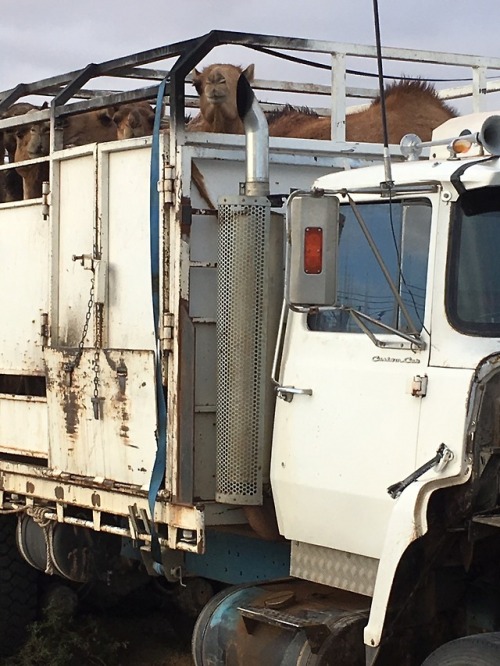
Camels For Export
This morning chatting to a bloke at the petrol station, I asked him what he was doing in Copley. He told me he was driving a load of camels to the abattoir in Peterborough, South Australia but he’d broken down.
Not an answer I was expecting.
Camels and their Afghan handlers were first brought successfully into Australia from 1860 as the perfect solution for exploring the outback and the Burke and Wills expedition was the first that used them. The Muslim cameleers soon began running their own camel trains and, by 1890, dominated this business. They encountered a lot of aboriginal groups and a sort of mutual trade arrangement was setup – Afghans taking goods along traditional aboriginal trade routes like the Birdsville Track and bringing in new goods such as sugar, tea, and tobacco.
When motorized transport arrived the cameleers were displaced and the camels were simply abandoned into a world well suited to them. By 2008 it was estimated that there were a million camels in Australia – the largest feral camel population in the world – doing enormous damage to the environment and infrastructure.
The numbers are now closer to 300,00 after culling and other controls. One of these controls is to sell the camels as food to those countries that appreciate them and the Middle East countries love the fact that the animals are free from disease and free from the political issues in North Africa.
Hence the broken down truck in Copley – on its way to supply the Saudi need for camel meat. Not exactly selling sand to the Arabs – but a close second.
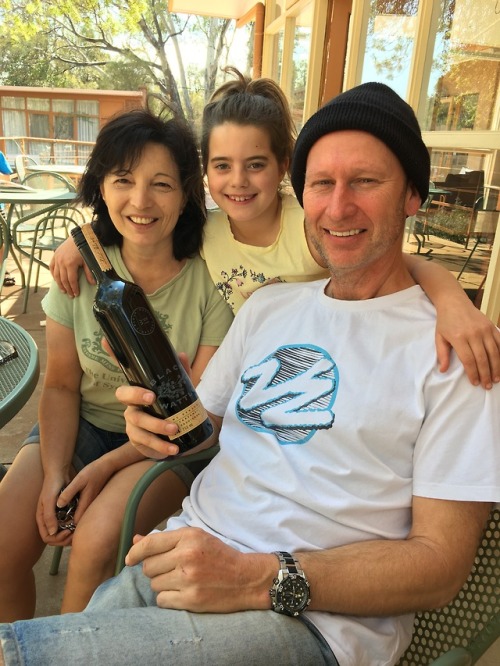
What Wine Goes With Emu?
We continue to meet the nicest people everywhere we go in Australia. We are rapidly coming to the conclusion that ALL Aussies are nice.
Stopping for breakfast in Wilpena Pound – a beautiful amphitheater of mountains in the middle of the Flinders Ranges where we had camped the night before – we met Matthew and Kim and their kids. Like almost every Aussie we’ve met, they had both traveled the world and they swapped tales of long drives across the American west or visiting Hungary and paying the way working in wineries.
As we were all getting ready to leave, they asked what kind of wine I liked. I joked that we needed something that would go with emu as we were staying that night at the Prairie Hotel in Parachilna whose specialty was ‘Feral Mixed Grill”. Matthew and Kim pulled from their stash a bottle of Barossa Valley cabernet sauvignon from Black Wattle winery and hoped we’d enjoy their country.
The wine went superbly with my chargrilled kangaroo fillet with sweet potato puree, saltbush gnocchi, warrigal greens, and red wine chili quandong jus.
The Australian welcome never stops.
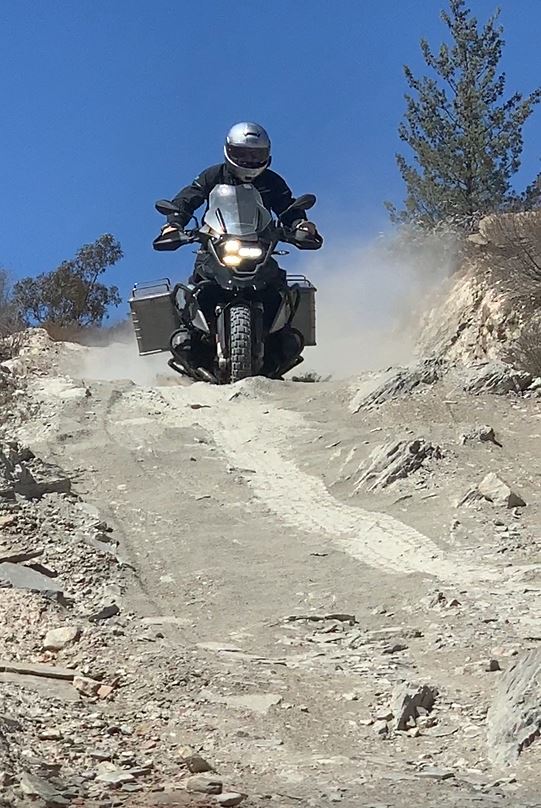
Warn Them or Film Them?
A question for my adventure bike riding friends. If you come to a very difficult section of the track well ahead of your riding buddies, do you a) warn them or b) film them? You know, just in case.
Well, Bill Whitacre chose option b). Thanks Bill.
This is part of a trail near Arkaroola in the Flinders Ranges in South Australia. The drop off is a lot worse than it seems on this video and there is no indication until you fly over the crest. Actually, being warned would not have made this easier. Just relax and stay off the brakes. A hundred yards further on I hit a hole hard enough to knock my feet off the pegs and rip a hole in another tire.
Here they call that grey stuff “bulldust”. No idea why.
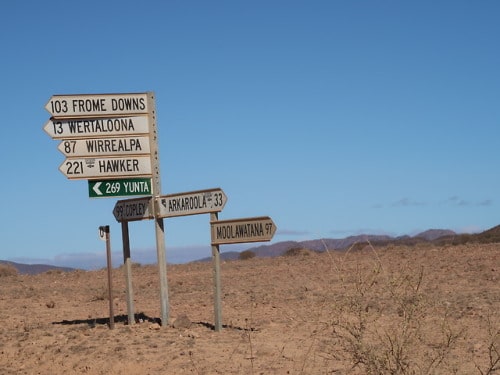
You Know You are in the Middle of Nowhere …
… when You are 267 Kilometers to Nowhere.
Reginald Spring was an Australian geologist who made two huge impacts in his life.
First, he discovered fossils that established proof of the first animals that helped date and explain the Cambrian Explosion – the amazing proliferation of ever more complex creatures after billions of years of almost no change in the Earth’s evolved organisms. Spoiler alert – we all come from jellyfish – sorry to break it to you. He was out surveying old mines for potential new uses and, reportedly, came across these fossils whilst having lunch. You stub your toe in the vastness of the Australian outback and, change science forever. You have to know what you are looking for I suppose.
This was in the Ediacara Hills – seen in this photo taken in the Flinders Ranges near Parachilna in South Australia. They even added the Edicaran Period in the geological table to recognize this change in the way we have to think about evolution.
Then in 1968 he bought a few hundred acres in the Northern Flinders that was once a uranium exploration site that he had extensively surveyed (yes there is uranium under here) and turned it into the Arkaroola Wilderness Sanctuary. You know this is in the middle of nowhere when it’s hundreds of kilometers to nowhere.
Tomorrow, sadly, we are leaving Arkaroola after a stay they was extended to fix my second serious puncture. The area is spectacular, the hotel and food are perfect, and the people here are a delight.
Within an hour of getting back from a day ride with a serious tire problem, the staff had figured out someone was coming up from Port Augusta (350 Km away) and could bring a tire that some else could collect from Copley (150 Km away) and get here by the afternoon. No fuss and a literal and figurative bush telegraph was set up to get us out of a bind.
“No worries mate. Too easy” as they say in Australia.
Follow Colin’s blog, ColinDotPDX, for more of his travel experiences,
or check out his profile, Colin Evans, to learn more about him.



[…] Colin Evans’ Motorcycle Tour of Australia […]
[…] Colin Evans’ Motorcycle Tour of Australia […]